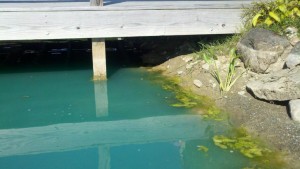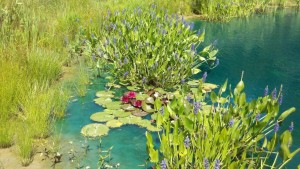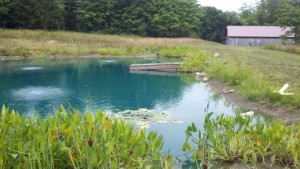 What a year so far with fires destroying timber land, homes and lives to tornadoes destroying the same. Then continuing severe thunder storms creating floods and on the flip side droughts in areas that are still in effect. What next? Hurricanes to start up, so more potential for flooding.
What a year so far with fires destroying timber land, homes and lives to tornadoes destroying the same. Then continuing severe thunder storms creating floods and on the flip side droughts in areas that are still in effect. What next? Hurricanes to start up, so more potential for flooding.
Let’s take a quick look at the drought we had last year in Erie, Pa. It was a strange spring when we didn’t have too much rain and when we did, it almost got the ground wet but not even a trickle from the watershed to make it to the pond. Our hot summer months that usually are July and August started in Late May and ran through the middle of September. The Ponds dropped drastically in water level and they also go very warm.
After seeing the effects on the pond from lack of rain and evaporation it concerned me a bit. Sure we still had plenty of  water in the pond to be able to water the garden and if the dry heat wave continued we would have enough in case of a fire.
water in the pond to be able to water the garden and if the dry heat wave continued we would have enough in case of a fire.
Both ponds acted or at least looked different than each other, where our large pond was built with steep banks the pond itself didn’t look too much smaller the original shape; picture a bath tub loosing water. The little pond was built differently with very gradual slope entering the pond, as the water dropped the pond continued to get small and smaller in size, along with the depth of the pond.
Here’s the amazing thing about our ponds or at least when folks find out how they are filled it does seem baffling at times. Both ponds are only fed or kept full with rain water. All the ground around the pond and from the higher elevation of the ponds is the watershed, where rain water falls to the ground and runs to the pond.
 No Rain? No water for the ponds and the level begins to drop. Partly small seeps that let water seep into the ground and evaporation will make the water level drop. When building the big pond I did have a wet area that could be thought as a spring but it only kept the ground wet in that area with no actual running water. If it was truly a spring it could also at some point become a leak. If the spring dried up it could back fill from the pond and drain the pond back into the spring.
No Rain? No water for the ponds and the level begins to drop. Partly small seeps that let water seep into the ground and evaporation will make the water level drop. When building the big pond I did have a wet area that could be thought as a spring but it only kept the ground wet in that area with no actual running water. If it was truly a spring it could also at some point become a leak. If the spring dried up it could back fill from the pond and drain the pond back into the spring.
Water tables can change over time, what used to be an awesome spring can dry up next year. Water wells have gone dry even though for years they produced all the water we needed. One changing event can be a small tremor or earthquake as we had years ago in the surrounding counties. Wells that have dried up now have water almost to the top of the well other have been emptied and springs that fed ponds have dried up.
After our little drought last year we became concerned for the ponds and the life that lives in and around them we started looking at where we can catch or divert more water to the ponds to help with these droughts, maybe underground or find more surface from the water shed that can be diverted to the ponds.
We’ll get into one of the ways we started collecting more water for the big pond in upcoming posts. The Baby Pond.

